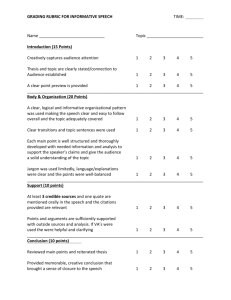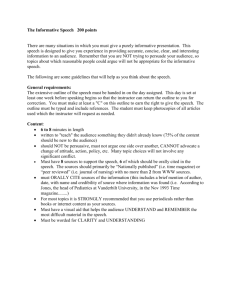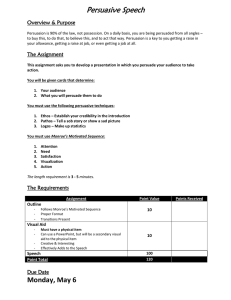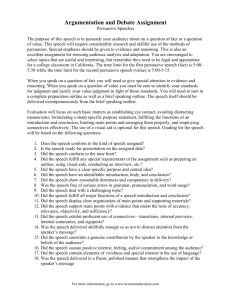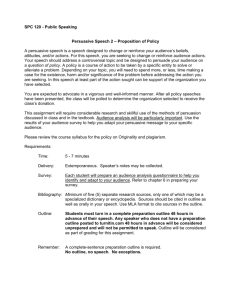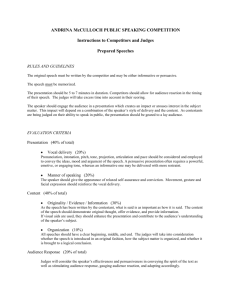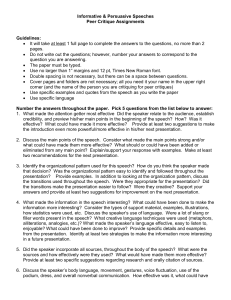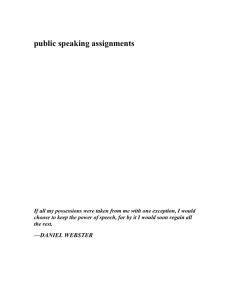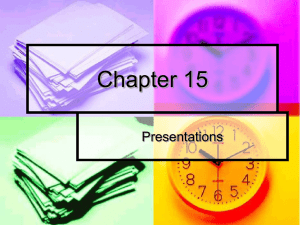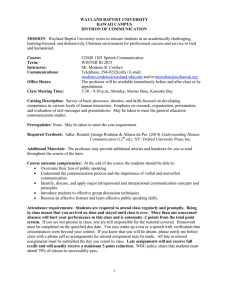SPEECH 2 Demonstration/Informative Speech 6
advertisement
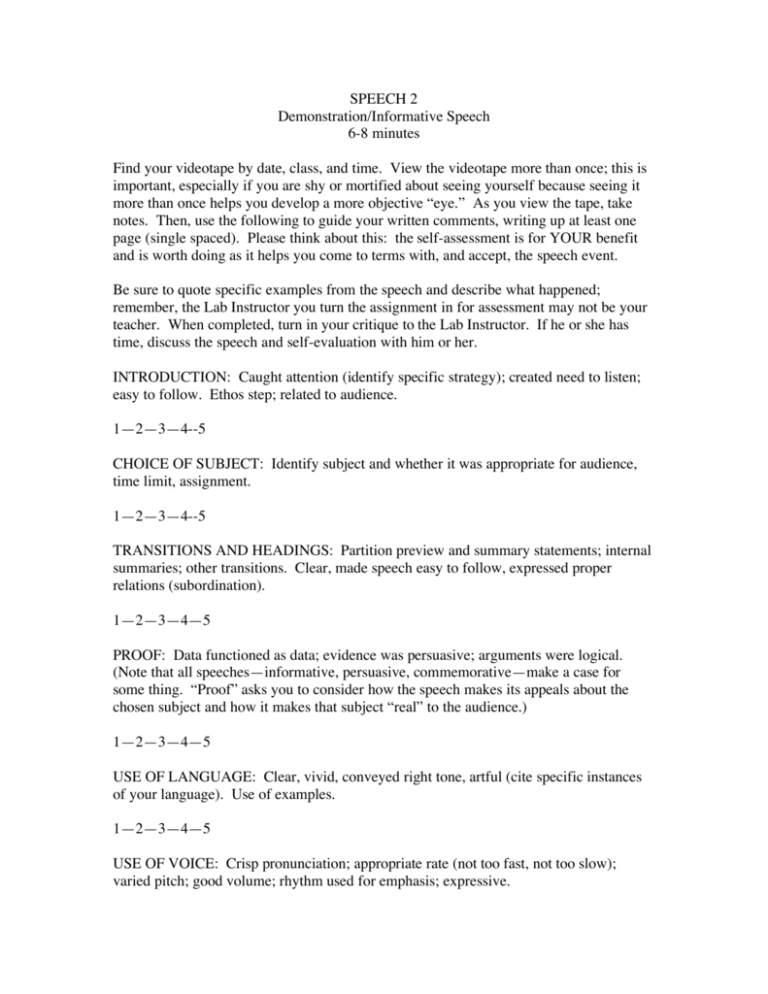
SPEECH 2 Demonstration/Informative Speech 6-8 minutes Find your videotape by date, class, and time. View the videotape more than once; this is important, especially if you are shy or mortified about seeing yourself because seeing it more than once helps you develop a more objective “eye.” As you view the tape, take notes. Then, use the following to guide your written comments, writing up at least one page (single spaced). Please think about this: the self-assessment is for YOUR benefit and is worth doing as it helps you come to terms with, and accept, the speech event. Be sure to quote specific examples from the speech and describe what happened; remember, the Lab Instructor you turn the assignment in for assessment may not be your teacher. When completed, turn in your critique to the Lab Instructor. If he or she has time, discuss the speech and self-evaluation with him or her. INTRODUCTION: Caught attention (identify specific strategy); created need to listen; easy to follow. Ethos step; related to audience. 1—2—3—4--5 CHOICE OF SUBJECT: Identify subject and whether it was appropriate for audience, time limit, assignment. 1—2—3—4--5 TRANSITIONS AND HEADINGS: Partition preview and summary statements; internal summaries; other transitions. Clear, made speech easy to follow, expressed proper relations (subordination). 1—2—3—4—5 PROOF: Data functioned as data; evidence was persuasive; arguments were logical. (Note that all speeches—informative, persuasive, commemorative—make a case for some thing. “Proof” asks you to consider how the speech makes its appeals about the chosen subject and how it makes that subject “real” to the audience.) 1—2—3—4—5 USE OF LANGUAGE: Clear, vivid, conveyed right tone, artful (cite specific instances of your language). Use of examples. 1—2—3—4—5 USE OF VOICE: Crisp pronunciation; appropriate rate (not too fast, not too slow); varied pitch; good volume; rhythm used for emphasis; expressive. 1—2—3—4—5 PHYSICAL DELIVERY: Describe gestures and expressions; were they appropriate for speech? Was there movement? Did the speaker feel his or her own words? Was the speaker dynamic? 1—2—3—4—5 CONCLUSION: Wrapped up speech without introducing unsupported points? Identify attention-gainer and whether it was sufficient to gain closure. 1—2—3—4—5 THE MAJOR CLAIM (THESIS) OF THE SPEECH IS (complete sentence): THE MAIN HEADS USED TO SUPPORT THE THESIS WERE (use roman numerals and write in complete sentence): ADDITIONAL COMMENTS (Noteworthy aspects of the speech, points the speaker might have addressed, great arguments, etc.):

